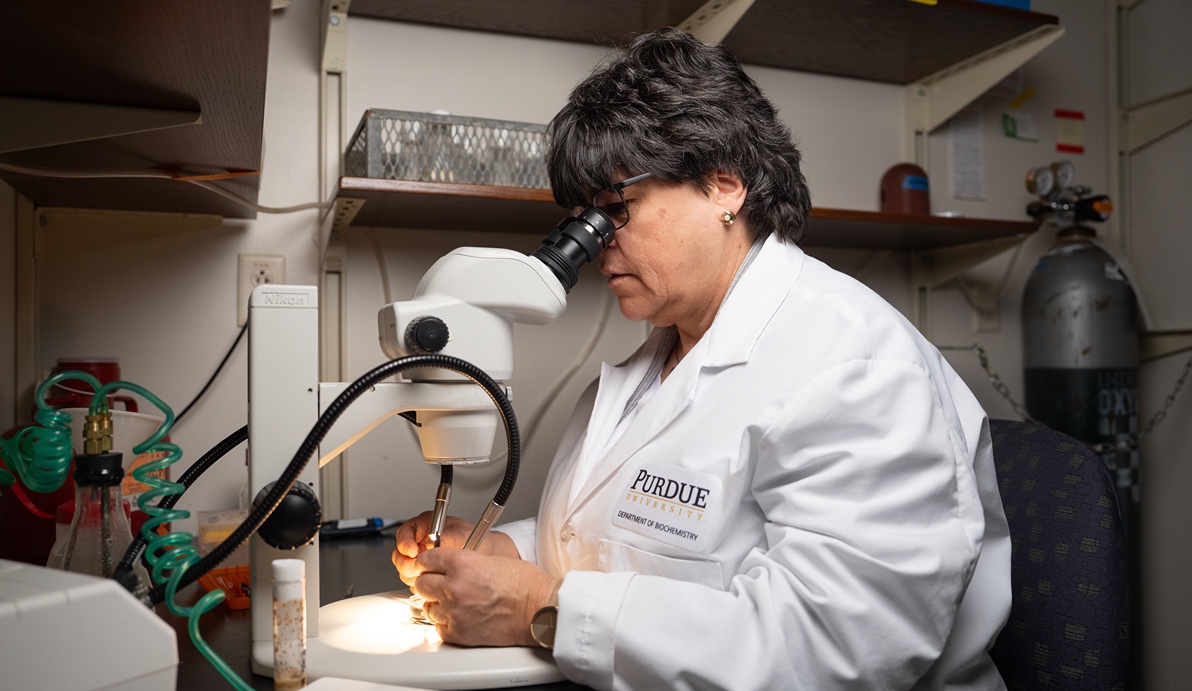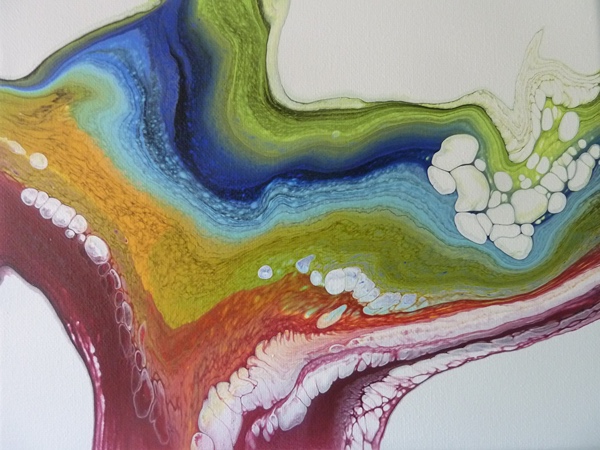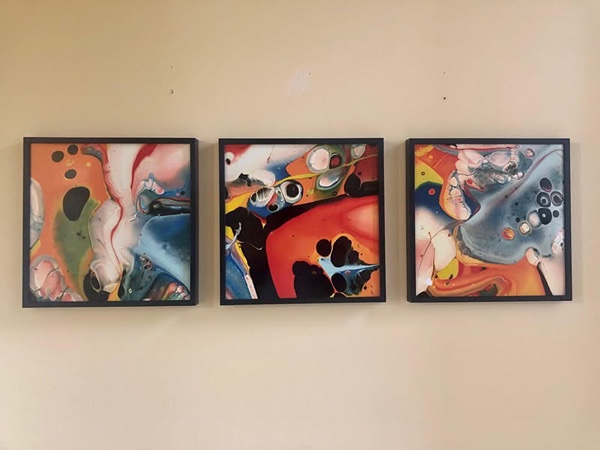Behind the Research: Doris Kemler
About the feature
Many people are involved in the remarkable range of programs, services and facilities that undergird research in the College of Agriculture. Collectively they’re integral to the college fulfilling its research mission. “Behind the Research” explores their individual roles. Each academic year, we profile six people whose work supports the College of Agriculture’s global reputation for developing innovative, multidisciplinary solutions to challenges and then putting those solutions into action.
Doris Kemler, Senior Research Technician, Department of Biochemistry
- Supports undergraduate and graduate students in a busy biochemistry lab
- Uses a microscope to dissect and prepare fruit fly eyes for study – a highly delicate and skilled task
- Manages the lab’s databases and supply orders
A fruit fly is about 3mm long; its eye is about 0.16mm2. These eyes contain some 800 separate eye units called ommatidia, each one is no bigger than 22 micrometers, far smaller than what we can see with the naked eye. Imagine dissecting this tiny eye, cleaning it, and staining its parts to be better visualized by scientists. That’s the kind of work Doris Kemler does on a regular basis as a senior research technician in Vikki Weake’s biochemistry lab.
“The eyes are floating in a fixation solution during the dissection, that makes it quite challenging,” Kemler says.
Kemler has been a member of Weake’s lab since 2023, but she’s been at Purdue for about 20 years, working as a research technician in various labs. She is originally from Switzerland, and came to the US when her husband got a postdoc position at Yale; He’s now a professor in Purdue’s biology department.
Kemler, who grew up near Zurich, was inspired to go into lab work by her older sister, also a scientist. “I visited her at the lab one day, and thought ‘oh yeah, I will do this,’” she recalls.
Weake’s lab team uses fruit flies, cultured cells, and yeast to study mechanisms involved in aging and neurogenerative diseases. Fruit flies have long been used in scientific research, as they have a short life cycle of less than two weeks, and females can produce hundreds of eggs at a time. Weake’s team uses the flies as a model system to look at the brain’s aging process, and to better understand neurodegenerative diseases and diseases like cancer.
This, of course, means the lab uses a lot of flies. Any given experiment may take hundreds, and Kemler is responsible for their care and keeping, in addition to helping prepare them for study. If the flies need a special diet, Kemler prepares the special fly food. If an experiment requires sorting males from females, she does that too – male flies have a darker abdomen than females.
When not taking care of the flies, Kemler supports the lab administratively, keeping databases of equipment and chemicals, and ordering new supplies when needed. She also assists students – the lab has about half a dozen graduate students, plus undergrad researchers and post-docs. When someone needs help preparing a slide or figuring out another lab task, Kemler is often the one they ask.
“I like the diversity of my job,” she says. – it’s not the same work every day.”
Kemler also values her job’s flexibility – she works a 50 percent schedule – which was critical when raising her two daughters. They’re both now students at Purdue – one a sophomore in biomedical engineering, the other a master’s student in speech, language, and hearing sciences. These days, Kemler’s half-time schedule allows her to pursue her creative passion: concrete jewelry and acrylic fluid art. She exhibits both at local art fairs, including Art on the Wabash, and sells them on Etsy. Last August she won an exhibition at the Tippecanoe Arts Federation with her acrylic fluid art paintings.
“It’s really important for me that I can do other things besides working and managing the household,” she says. Her concrete jewelry has an elegant, minimalist look: simple, geometric shapes brushed with gold flake that looks almost natural, like shiny lichen. Her acrylic fluid works, which are made by pouring thinned acrylic paint on canvas, also seem to take inspiration from nature, though with far bolder colors. Gaze at the paintings and the viewer might imagine butterfly wings, geodes, the rings of ancient trees. Perhaps even the multi-part eyes of a fruit fly.








